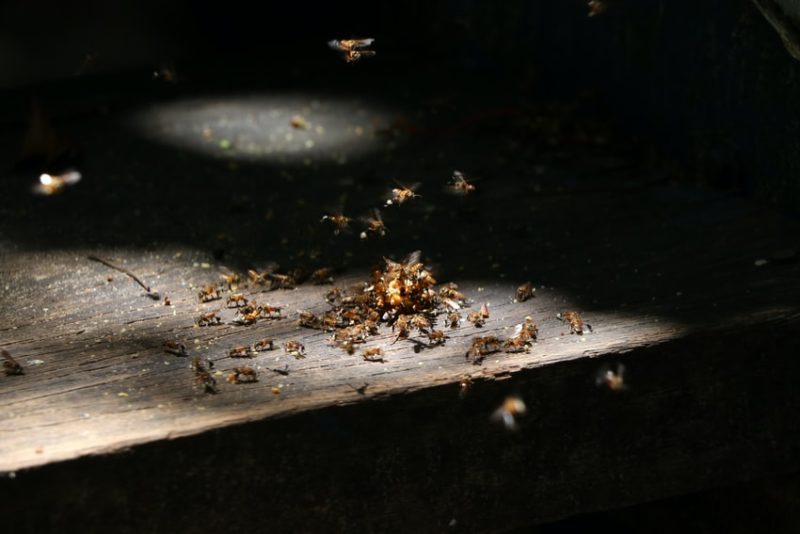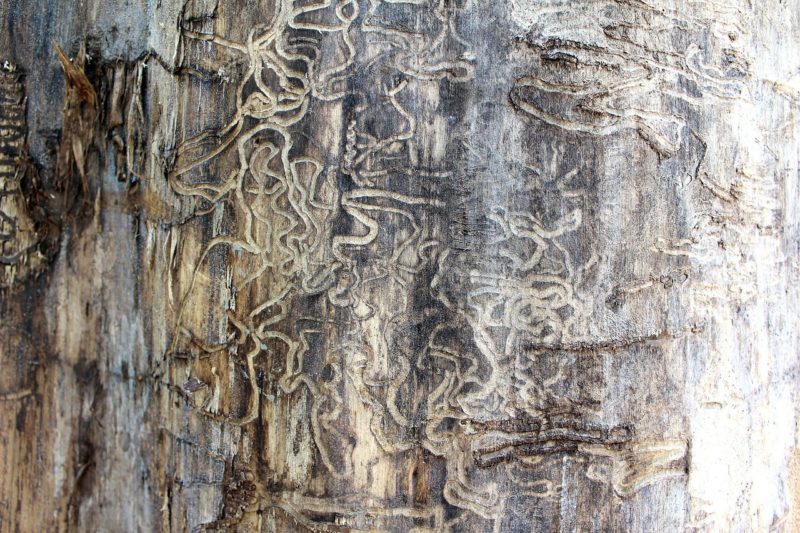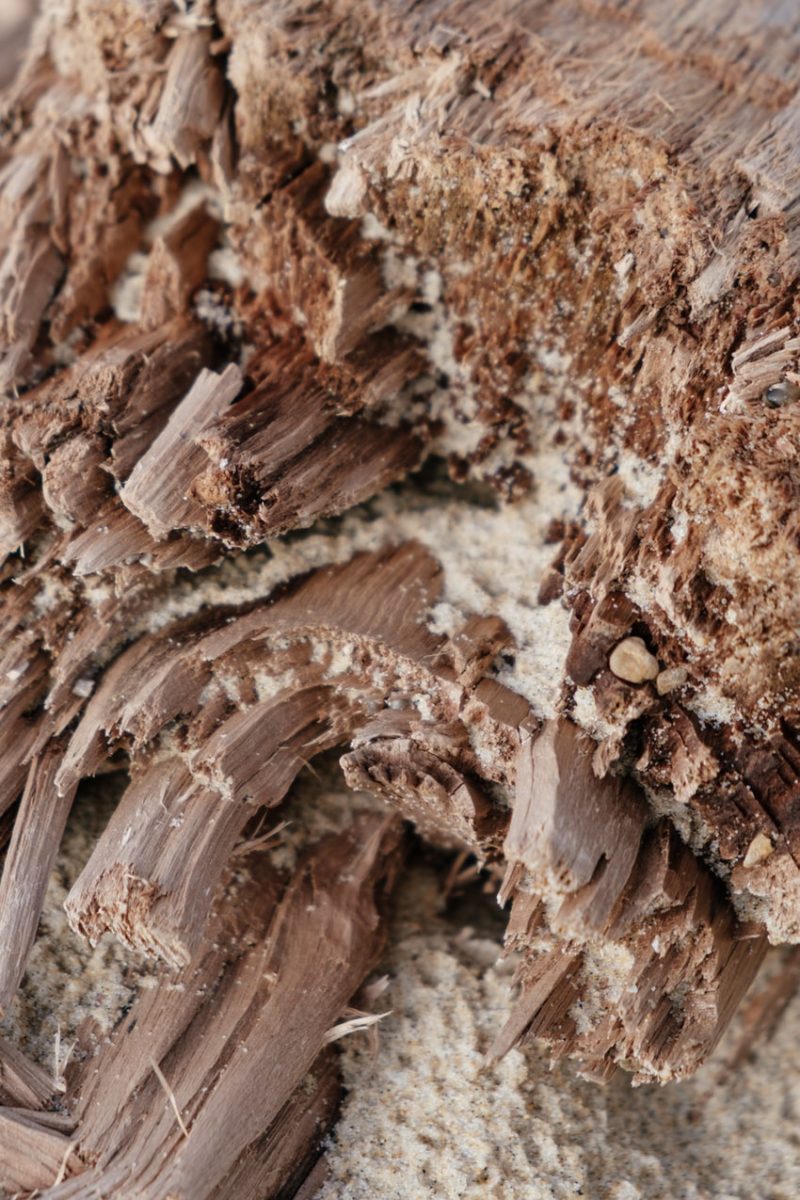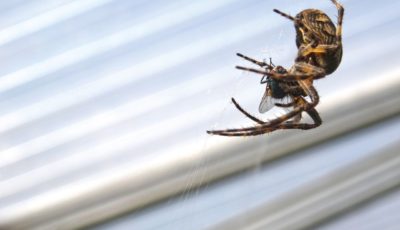Reasons Why You Shouldn’t Ignore Termites in the House
Ignoring a termite infestation is a big mistake that could jeopardize the structural integrity of your home and lead to dangerous collapses. A termite infestation can be very difficult to notice in its initial stages. By the time you notice one, it may have already progressed extensively through the structure of your home.
So, in this article, we’re going to go over some of the most telltale signs that you’re dealing with a termite infestation, what a termite infestation can mean for your home, how we recommend you deal with termites, and how you can prevent termites from setting up in your home.
Signs of Termite Infestations
If you suspect your home may have termites, look out for the following signs on your walls and floors.
General Signs:
- Damaged or hollowed-out wood
- Maze-like patterns on wooden floors, walls, and furniture
- Termite feces; resembling small piles of salt and pepper
- Piles of insect wings resembling tiny fish scales
- Tiny burrows in the mud surrounding the foundation of your home
Signs In Walls:
- Peeling paint, similar to what you’d expect from water damage
- Drooping walls
- Discolored walls
- Pinholes in the drywall
- Windows and doors that close too tightly
Signs In Floors:
- Buckling laminated or wooden floorboards
- Loose or loosening floor tiles
- Creaking floorboards
If you’ve noticed any of these signs, it’s worth getting your home inspected by a pest expert to confirm the presence of termites because, by that point, the termite infestation is well underway and not something you can afford to ignore. But, how do people get rid of termites? Usually, a professional solution is best.
Effects of Termite Infestations
A colony of termites can have serious consequences on your home, such as:
Structural Failures
Most termite infestations build up for three to five years before any visible sign. By then, the colony may have already reached the inner parts of the structure of your home. Termite-infested material deteriorates quickly when exposed to the elements. Even without any exposure, its load-bearing capacity is severely limited once it’s been thoroughly tunneled through by a mature colony.
It’s not just wooden floors and walls you have to worry about. Termites will consume anything made of cellulose, so this includes cardboard, paper, and even fiberboard.
Electrical Failure
Termite can penetrate the casing of your electric cables as they search for food throughout the structure of your home. This can leave electric cables exposed or damaged, and exposed and damaged live wires are serious electrical hazards and fire risks.
Exacerbated Water Damage
Excessive moisture can attract damp-wood varieties of termites, and once these termites move in, they’re only going to make water damage happen much more quickly as they bore through the wood, letting water in. Termites may not be a sure sign that you have termites, but if damp-wood termites are common in your area, excess moisture condensing on glass surfaces in your home could be attracting termites.
Destroyed Wood
Termites are good for the environment because they help speed up the decomposition process of dead trees, but large enough termite colonies can infest healthy, living trees, as well. For most trees, a termite infestation isn’t too much of a problem, but a persistent infestation will wear down even big trees, eventually.
You might have a tree in your yard that you’re fond of; don’t wait for termites to kill it slowly. Moreover, if you see a tree near your home that’s been infested with termites, there’s a chance they’ve already infested your home, too.
Termite Infestation Solutions
The professional is the best option for termite infestations, as there’s no way to exterminate a termite infestation completely without professional equipment and training. Existing DIY methods can be messy and dangerous while failing to eliminate entire colonies.
Without professional assistance, you’re also likely to miss secondary, satellite colonies that would just reinfection your home afterward. If you’re making renovations or extensions to your home, be sure to consult with a termite control expert in your area to be sure your home is built to keep termites out.
Preventing Termite Infestations
Here is how you can prevent termite infestations:
- Eliminate sources of moisture and humidity in your home. Termites are attracted to moisture. Some parts of your home produce moisture on their own, like air conditioners and heat pumps. Make sure these machines are away from the ground and difficult for termites to find and that the moisture they produce is being properly drained away from your home.
- Inspect your home’s foundation and siding for damage. Look for cracks where termites can crawl or burrow through
- Regularly check for water damage. Inspect and properly maintain your home’s drainage and gutter system to prevent water damage. Don’t neglect to check fences and outdoor structures like sheds, fences, and gazebos. Eliminate all rotting wood from your property
- Check for signs of termites such as pinholes and burrows. Termites mate once a year, typically spawning and swarming in the spring. Take time to annually inspect both the interior and exterior of your home for signs of termites in late spring or early summer (April – May).
- Keep firewood far away. Store any firewood and kindling away from your home in a secure and dry container or structure.
- Trip surrounding plants. Trim trees and bushes nearby to your home to prevent them from touching your home.
- Use plastic for storage. Remember, termites eat cardboard and paper.












